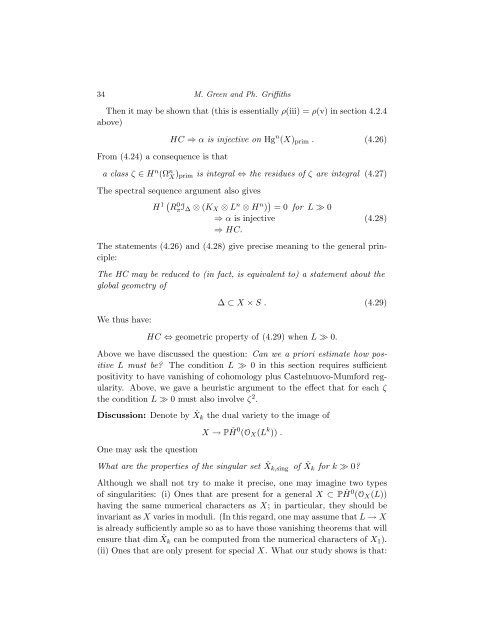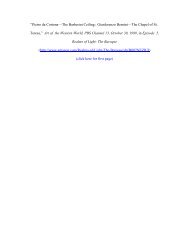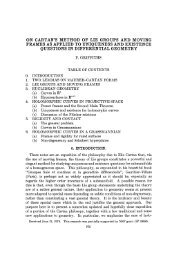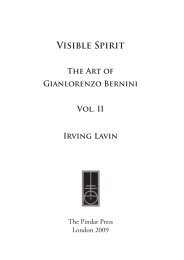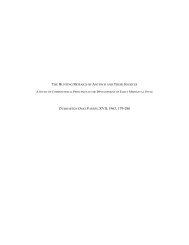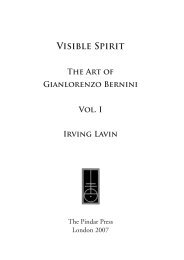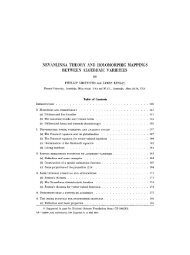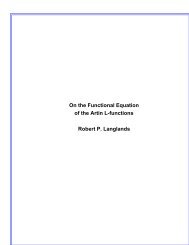4 Algebraic Cycles and Singularities of Normal Functions
4 Algebraic Cycles and Singularities of Normal Functions
4 Algebraic Cycles and Singularities of Normal Functions
Create successful ePaper yourself
Turn your PDF publications into a flip-book with our unique Google optimized e-Paper software.
34 M. Green <strong>and</strong> Ph. Griffiths<br />
Then it may be shown that (this is essentially ρ(iii) = ρ(v) in section 4.2.4<br />
above)<br />
From (4.24) a consequence is that<br />
HC ⇒ α is injective on Hg n (X)prim . (4.26)<br />
a class ζ ∈ H n (Ω n X )prim is integral ⇔ the residues <strong>of</strong> ζ are integral (4.27)<br />
The spectral sequence argument also gives<br />
H 1 R 0 πI∆ ⊗ (KX ⊗ L n ⊗ H n ) =0 for L ≫ 0<br />
⇒ α is injective<br />
⇒ HC.<br />
(4.28)<br />
The statements (4.26) <strong>and</strong> (4.28) give precise meaning to the general principle:<br />
The HC may be reduced to (in fact, is equivalent to) a statement about the<br />
global geometry <strong>of</strong><br />
We thus have:<br />
∆ ⊂ X × S. (4.29)<br />
HC ⇔ geometric property <strong>of</strong> (4.29) when L ≫ 0.<br />
Above we have discussed the question: Can we a priori estimate how positive<br />
L must be? The condition L ≫ 0 in this section requires sufficient<br />
positivity to have vanishing <strong>of</strong> cohomology plus Castelnuovo-Mumford regularity.<br />
Above, we gave a heuristic argument to the effect that for each ζ<br />
the condition L ≫ 0 must also involve ζ 2 .<br />
Discussion: Denote by ˇ Xk the dual variety to the image <strong>of</strong><br />
One may ask the question<br />
X → P ˇ H 0 (OX(L k )) .<br />
What are the properties <strong>of</strong> the singular set ˇ Xk,sing <strong>of</strong> ˇ Xk for k ≫ 0?<br />
Although we shall not try to make it precise, one may imagine two types<br />
<strong>of</strong> singularities: (i) Ones that are present for a general X ⊂ P ˇ H 0 (OX(L))<br />
having the same numerical characters as X; in particular, they should be<br />
invariant as X varies in moduli. (In this regard, one may assume that L → X<br />
is already sufficiently ample so as to have those vanishing theorems that will<br />
ensure that dim ˇ Xk can be computed from the numerical characters <strong>of</strong> X1).<br />
(ii) Ones that are only present for special X. What our study shows is that:


